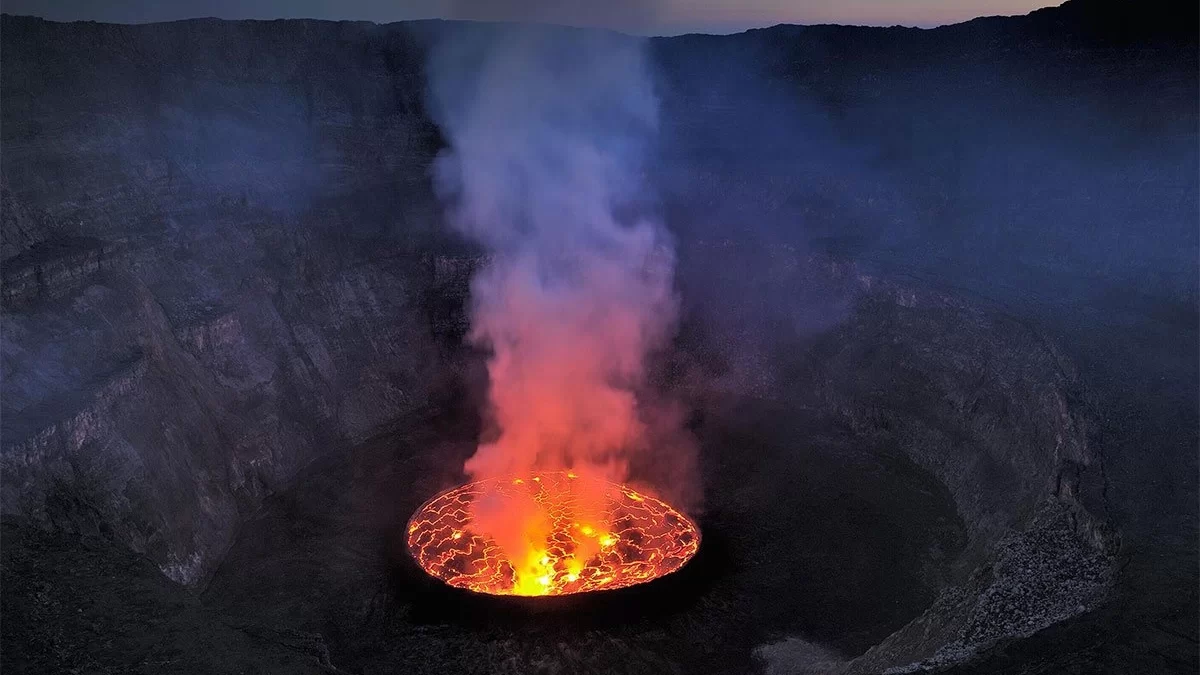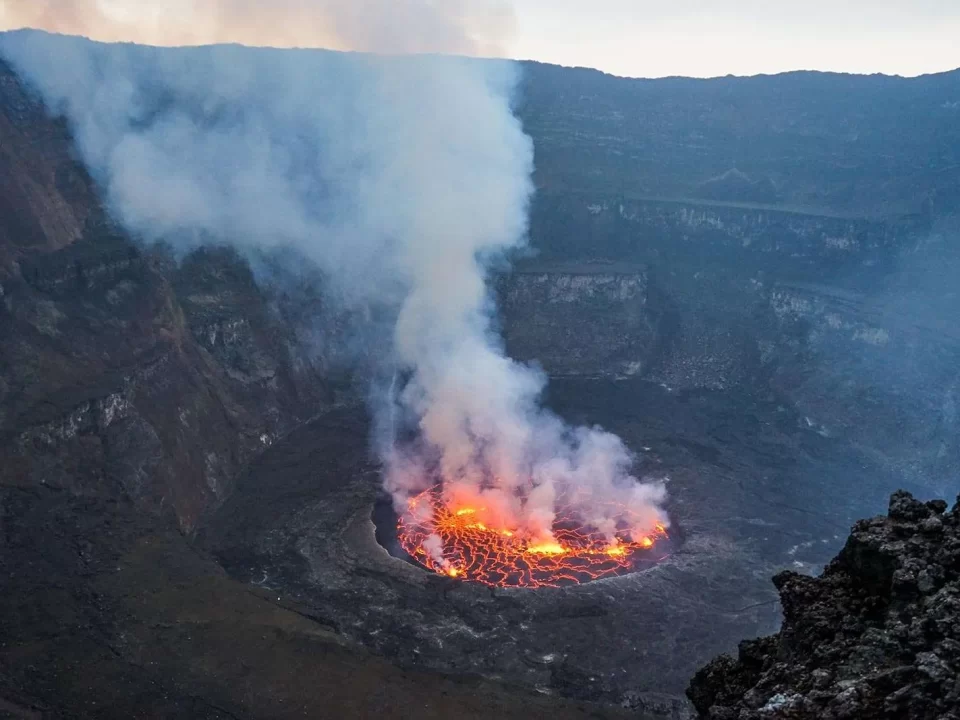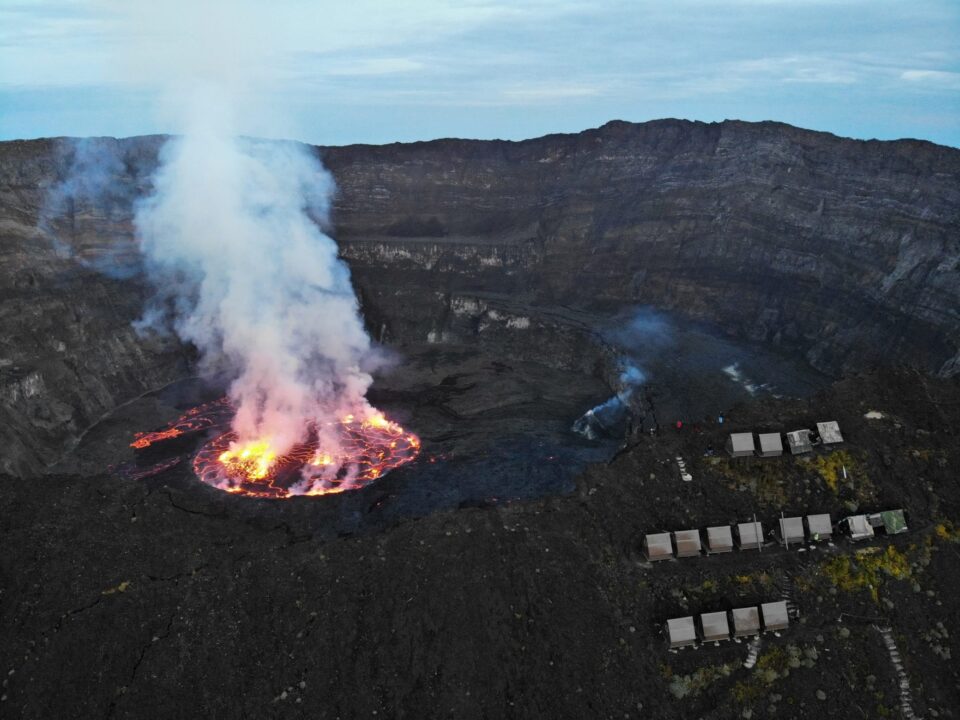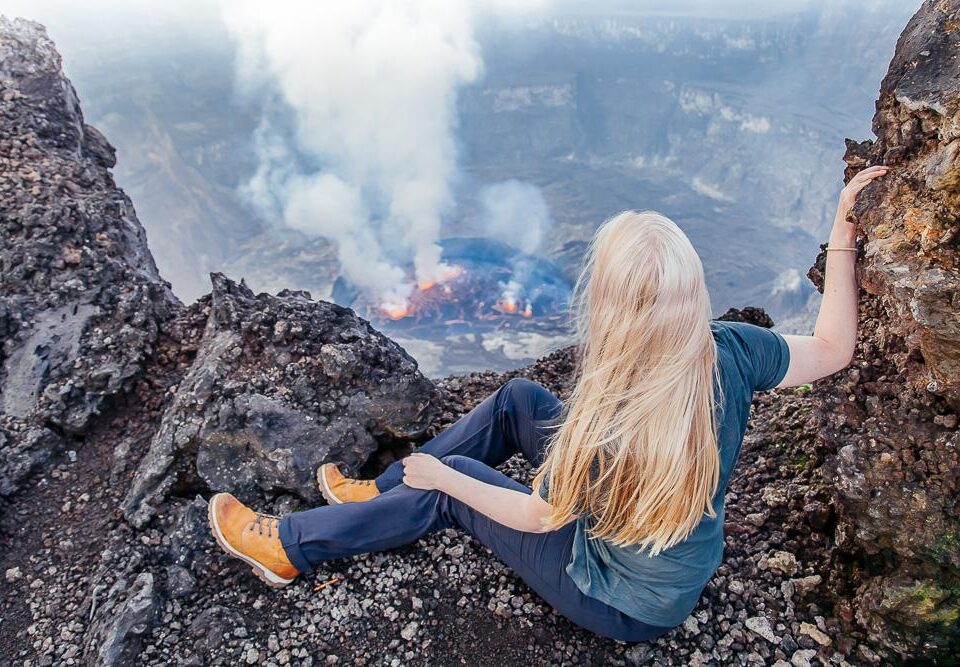How hard is hiking Mount Nyiragongo Volcano?

Uganda Wildlife Safari Destinations
January 11, 2024
2 Days Mount Nyiragongo Volcano Hiking Safari
January 11, 2024Conquering Mount Nyiragongo Volcano – Unveiling the Challenge
How hard is hiking Mount Nyiragongo Volcano?
How hard is hiking Mount Nyiragongo Volcano? — Embarking on the hike up Mount Nyiragongo may seem like a daunting task, with temperatures at the summit plummeting to a bone-chilling 5,000 times colder than expected. Prepare to face extreme cold by doubling the warm clothing you anticipate needing. Nighttime can be particularly freezing, as experienced by our group.
Navigating the Challenge: A Tough but Manageable Trek
While the prospect may sound intimidating, the reality is far from it. Booking through Trek Africa Expeditions ensures a seamless experience. A representative from the park meets you at the border, providing constant support throughout your journey. With their assistance, concerns about logistics fade away.
The trek demands resilience, taking approximately 5-6 hours to ascend and three hours to descend. The absence of switchbacks means a relentless uphill climb, making it a strenuous physical challenge. However, for those capable of walking around 15 miles on flat ground without breaks, conquering Nyiragongo’s summit is within reach.
Affordability Amidst Adventure: Sampling the Democratic Republic of Congo
Undertaking the Nyiragongo volcano climb offers an affordable glimpse into the Democratic Republic of Congo, a country ranked among the ten most dangerous globally. Climbing this volcano emerges as a relatively safe and adventurous way to spend 24 hours in the country.
Weather Unpredictability: Nature’s Vagaries
The weather atop Nyiragongo is unpredictable. Fortunate weather conditions blessed our journey, but the risk of reaching the summit and encountering poor visibility exists. Nature’s whims dictate the outcome, adding an element of unpredictability to the adventure.
Worthwhile Additions: Investing in Extras
Consider paying for additional amenities. A $5 investment in a wooden walking pole proves invaluable during the descent. Opting for the $100 gear and meal package eliminates the need to carry a sleeping bag or prepare meals atop a volcano, offering significant convenience.
Altitude Sickness Precaution: Diamox Wisdom
Diamox, a preventive medication for altitude sickness, becomes a wise addition, especially for those not acclimatized to altitudes above 3,500 meters. Prior experience above this altitude or knowledge of resilience to altitude sickness exempts travelers from this precaution.
Lightening the Load: Luggage Convenience
A luggage room facilitates the storage of belongings during the hike. Virunga National Park provides the option to purchase a fully-stocked backpack, streamlining the packing process.
Ignorance is Bliss: A News-Free Arrival
In the Democratic Republic of Congo, safety is paramount. Virunga closes the entire park if any danger is detected, ensuring visitor well-being. It is advisable not to consume news about the country before arrival, avoiding unnecessary fear. Trust in the park’s safety measures allows visitors to focus on the adventure.
Summit Safety: A Cautionary Tale
Approaching the edge at Nyiragongo’s summit demands caution. With no protective barriers, the risk of slipping is ever-present. Past incidents, such as a tragic fall resulting in a fatality, emphasize the importance of careful navigation. No ‘gram-worthy photo is worth compromising safety.
Drone Considerations: A No-Fly Zone
Labeling Nyiragongo as a “drone graveyard” warns against attempting to fly drones over the volcano. Numerous broken drones litter the summit due to the impact of airborne ash on their functionality.
Strategic Timing: Weekday Advantage
For those seeking a more intimate experience, avoiding weekends is recommended. Saturdays witness heightened activity, with UN and NGO workers from Goma often choosing this day for their ascent. Smaller groups are typical on weekdays.
Acknowledging the Crew: Gratitude through Tips
Expressing appreciation to the porter, cook, rangers, and guides is customary. Carrying extra cash for tipping showcases gratitude towards these individuals who risk their lives daily to facilitate unforgettable Virunga experiences.
Shielding Your Journey: Essential Travel Insurance
Securing comprehensive travel insurance well in advance is non-negotiable. Battle Face stands as a viable option for comprehensive coverage, while World Nomads is an excellent choice for non-British travelers, offering top-tier protection against unforeseen circumstances.
Embark on the challenging yet rewarding ascent of Mount Nyiragongo, where each step unveils the beauty of the Democratic Republic of Congo’s untamed landscapes.




